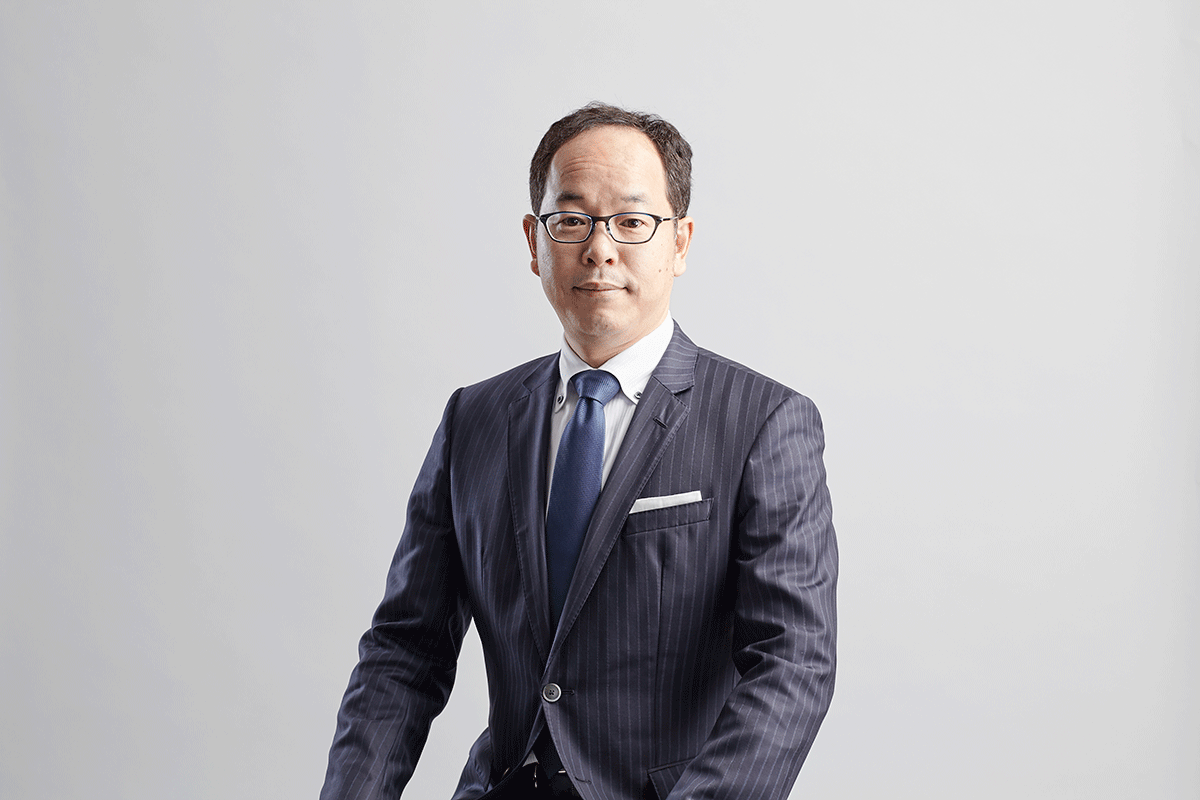Crafting Tabio's footwear magic: Delving into the world of quality socks, fast fashion fables, and the artistry behind perfect soles

In the late 1990s and early 2000s, low-cost fashion reached a peak with fast fashion retailers like H&M, Zara, and Uniqlo. These firms looked to replicate elements from high-end fashion houses but reproduce them cheaply and easily. Today, the fast fashion market has been estimated to be worth around USD 160 billion. As a specialized manufacturer of socks and legwear, what is your take on the fast fashion sector?
You may be surprised to know that I have never really cared too much for fast fashion, and the reason is that our company specializes in quality products and those are diametrically opposed to the mass production of the fast fashion industry. I feel that we are totally different, so that is why I do not pay much attention to what they are doing or even research them. We are not specialized in mass production and we simply do not produce high volume, however, one thing that is common between ourselves and fast fashion is speed. The speed to respond to customers’ needs is important and I believe that we are not inferior to them in terms of our swift response to consumer demands. Fast fashion companies are good at advertising that they are fast from planning products to getting them at the stores. However, they put tons of stuff at the stores, give big discounts to sell them fast, and scrap a lot of them left unsold to make spaces for the next products.
I saw a lot of subcontractors or partner companies discontinue their contracts with fast fashion companies for one-sided reasons. After seeing this kind of history in the fast fashion industry it has always put a question mark in my mind when it comes to their business model.
There are 60,000 sweat glands on the sole of the feet alone and when walking, the pressure on the sole of the foot is roughly 1.8 times that of the weight of the body. As such, socks need to consider these various factors when being manufactured. In your opinion, what makes the perfect sock?
There are two aspects in terms of quality. First of all, as you mentioned, socks are always worn in harsh environments, so if a pair of socks are worn out after a user wears them a mere 4-5 times, then that is not a quality pair of socks. All socks are carefully inspected one by one at the factories before being delivered to our distribution center. After that, our in-house Quality Control Center selects 10 pairs from all production lots and inspects them. These tests are performed to meet the Japanese Industrial Standards (JIS), however, our tests are also done one ranking above the JIS. This is the minimum requirement for our products.
The other aspect is rather artistic in nature. After a product is finished, we send them to the shops. At those shops, we check the quality and how they are put on the shelves. We put importance on the feeling of the clothes and the feeling of the product. Whether that be the touch or texture, even the softness. That appearance and feel needs to be consistent and that consistency is critical to us. If you see something that looks fluffy but when you touch it is not, that disappointment sticks in your mind. That is the opposite effect of what we are looking to achieve. We want there to be a correlation between what a customer sees and what a customer feels when they touch a product. As you can see, we evaluate quality from two fronts: industrial and artistic.
The role of retail stores has changed during the COVID-19 pandemic as people were forced to stay at home and many customers began to shop online. What impact did the COVID-19 pandemic have on your business and how did it affect your design of the store experience for your customers?
COVID-19 impacted all industries, and what we faced was the boom of online shopping. We have prepared for this new era, but the COVID-19 pandemic accelerated the onset by about four-to-five years. We have found the past two or three years challenging, and in order to respond, we felt that we need to give customers a reason to visit our physical retail locations as well as websites selling our products. We have utilized social networking to that end, and it has allowed us to promote our products directly to customers. On a regular basis each store has planned its own limited-edition products that can only be purchased at that store, and the same has happened online too. In fact, we have released such products that can only be purchased at online stores and products that can only be purchased at physical stores regularly. Additionally, we have looked to collaborate with other companies to release new products on a regular basis. This collaboration trend is seeing some growth.
You are responsible for many well-regarded brands, one of which is the self-titled Tabio brand, which was born as a premium brand targeting the global market. How are Tabio branded products superior to more conventional legwear and how do you plan on further growing the brand in the future?
Regarding the difference between ourselves and our competition, I think it comes down to the fact that our competitors tend to be general clothing stores whereas we are specialized in socks and legwear. Socks are just one of many products, so the quality is totally different. They use machines to make large quantities. We continue to protect and maintain the machines that can make good socks. They are very old and analog machines that can only be adjusted by skilled craftsmen. They are inefficient but we use the machines because we can knit our quality socks only with the machines. I think that's the difference. To meet customer needs, we have a wide variety of colors as well as lengths. Our number of variations sets us apart from our competitors.
Since our shops are specialized in socks, we would like to entertain the customers who visit the shops. When they visit our stores, we would like them to find a variety of different variations of our product lineups so that they will not get bored.
Our competitors pursue the growth of revenue through mass production and persistent lowering of prices. We are not the same and we have always pursued quality over everything else. I think by maintaining a high level of quality, we have been able to grow our reputation for high-quality socks and legwear.
Many consumers might not see socks as an item of fashion or style. How do you convince potential customers of the importance of investing a bit more money in socks so that they can have a handcrafted sock rather than a cheap fast fashion variety?
A lot of people are considered as not concerned about socks; however, you might find yourself wearing the same couple of pairs every day because they are your favorite, even if 20-30 pairs of socks could just be sitting in that drawer. What we are trying to offer to our customers are the types of socks that people love and can wear every day for a long time, depending how to wear and wash them. Though you may only spend JPY 300 on some fast-fashion socks, they are just going to sleep in your drawer. I prefer socks from some European brands as well. I used to repeatedly wear them also. The socks that sleep in the bottom of my sock drawer are the ones in low quality from other brands and shops even though they might be much more expensive than our socks .
Can you tell us the role that collaboration and partnerships play in your business model, and are you looking for any partnerships in overseas markets?
For China, we found a partner in the local market. I think a big difference of preference there is the colors. For other countries such as England and France, we have been able to hire the people in those markets. About 25 years ago, we invited the people hired to open the store in London to come to Japan and we educated them about Tabio. Once they knew more about our company, they went back to London and we deferred to them about shop openings as well as the selection of products to sell. We repeated this process in Paris too.
We thought that although we had success in Japan, that process would not necessarily work overseas. There is no direct translation for that success, and to receive acceptance from those overseas markets, we needed to hire local people who had a deeper understanding of establishing businesses in those localities and understanding local preferences. Those people were educated about our brand and culture first and then brought our brand to their markets. Basically, we only found a partner company in China, but for European countries, we relied on hired human capital.
In 2002 you opened your first international store in London, England, and you now have 32 across the world in locations such as France, China, and here in Japan, you have around 241. What countries or regions have you identified as the next targets for Tabio?
Right now, we are challenging the American market via e-commerce. About half
of that revenue is coming through sales for sports socks. All of our products are sold through the Shopify e-commerce platform, so it is easy for us to analyze the customer demographic statistics. We are in the process of analyzing that data so that we can find more ways of expanding the market going forward. We have made a decision that future expansion will come through online shopping and for that reason, we plan to fully utilize social media to promote our products.
When we find a particular country that has good sales through e-commerce, then we will expand in that country by opening a few physical shop locations. To summarize the process; we start by testing our business online and if we find any countries that have large numbers of sales, then we open physical locations in that country. It is hard to articulate specific countries, but online we are testing ourselves in the US.
For Q3 2022, your sales were recording great numbers; up 13% from 2021. Could you comment on these positive results and what are some of the key reasons for this strong performance?
I think it is ONLY 13%. That 13% is a result of our failures rather than our successes. We failed to catch up with the speed of cycles of certain trends, and as a result, we had a lot of opportunity losses. This fiscal year, I am assigned as the management officer for the production department so that I can be more engaged in the growth of our production capacity. Additionally, for the front line of our shops, we will have our staff focus on social media. We will align our production capacity with the trends we see on social media. The company is in a difficult situation right now and we will push through this time by identifying our brand online. We want customers to feel that our brand is one that is still needed by customers. In short, the 13% growth of the last year was driven by our shortages in production capacity.
Imagine that we come back and interview you again in five years' time. What goals do you hope to have achieved?
My goal is clear, and that is to continue to survive in the sock manufacturing industry here in Japan. Even if the Tabio brand disappears, I would like to see this industry in Japan survive. Ideally, I would like our employees to have the same mindset.
 |
Interview conducted by Karune Walker & Antoine Azoulay
0 COMMENTS